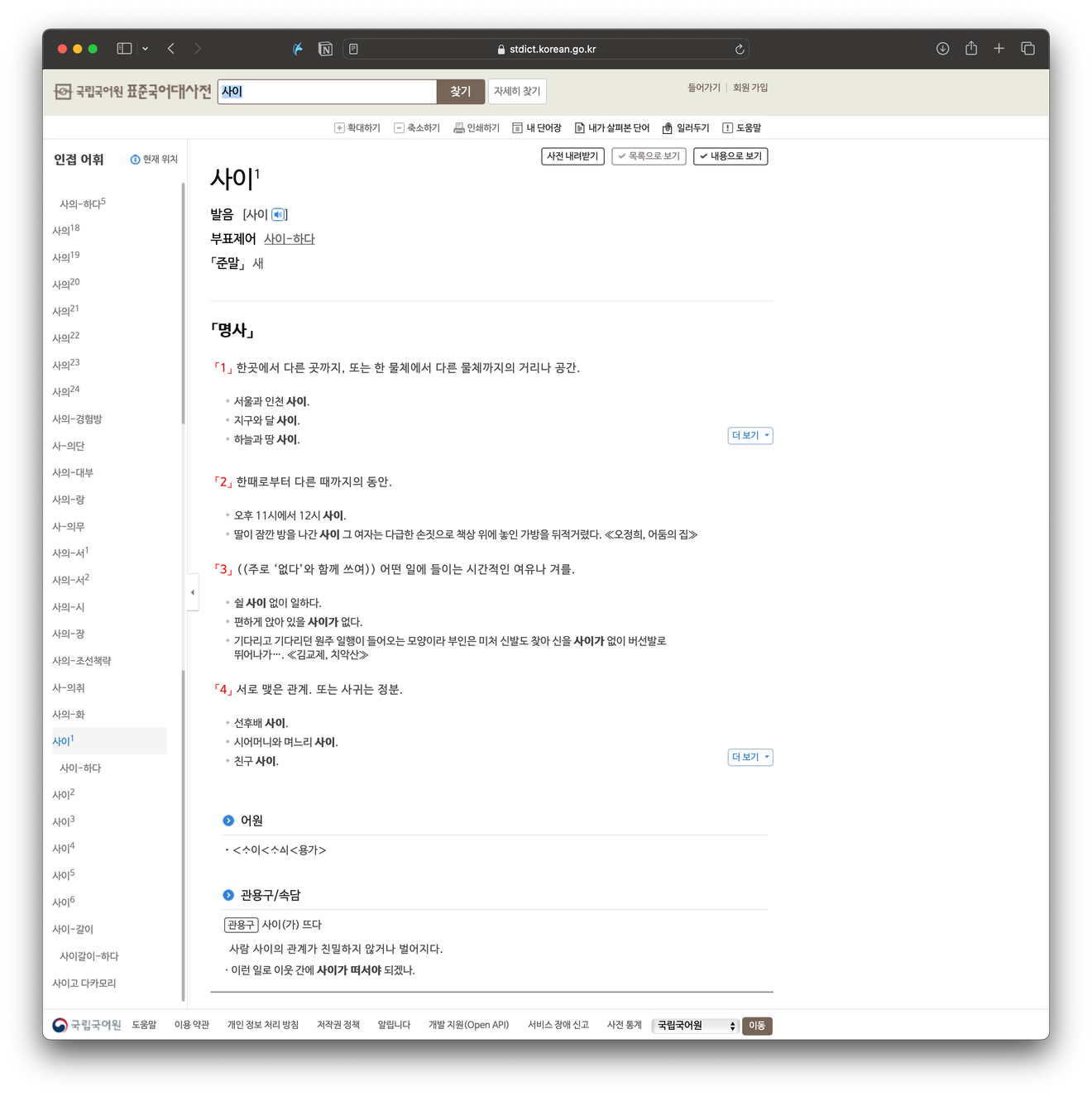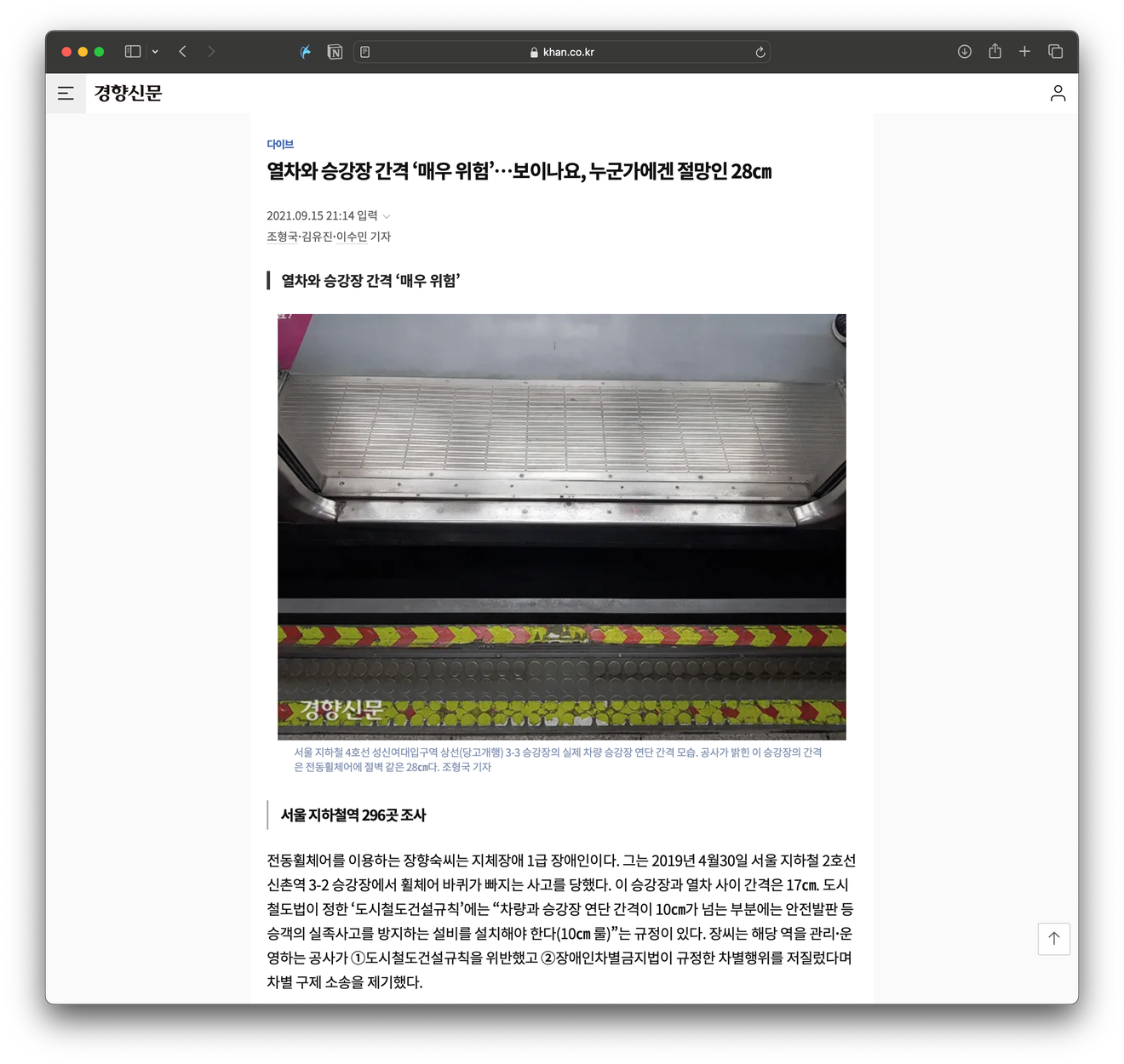Subject
- #Subway Announcement Phrasing
- #Difference between 사이 (sai) and 간격 (gangyeok)
- #Korean Word Composition
Created: 2024-04-25
Created: 2024-04-25 17:44
This is a common announcement you see on the subway. Which part of the text should be revised?
‘Balppajida’ can be considered the basic form of ‘balppajim,’ but it is not listed separately in the dictionary. This means that ‘balppajida’ is not a single word but rather a phrase (구, phrase) composed of ‘bal’+(이)+’ppajida’ (2-3 words). Korean grammar dictates that words should be separated by spaces, so it should be written as ‘bal ppajida’.

‘발빠지다’ (bal ppajida) is not listed as a standard word in the ‘Standard Korean Language Dictionary’.
The dictionary definition of ‘sai’ is as follows:

As shown, ‘sai’ can indicate distance or space. When it refers to distance, predicates such as ‘멀다’ (meolda, far) and ‘가깝다’ (gakkabda, near) can be used in conjunction with it. When it indicates space, predicates like ‘좁다’ (jopda, narrow) and ‘넓다’ (neolbda, wide) can be used in conjunction.
Of course, saying that the space between the platform and the train is wide is not grammatically incorrect. However, when we perceive the space between the platform and the train, we are using the unit of centimeters (cm), a unit of length, rather than square centimeters (cm²), which represents area. Therefore, when choosing a more appropriate predicate, it would be more suitable to use ‘멀다’ (meolda, far) rather than ‘넓다’ (neolbda, wide).

The Urban Railway Construction Rules and articles use 'centimeters (cm)' as the unit for the distance between a train and platform. (Kyunghyang Shinmun, September 15, 2021 article)
Sai
Gangeok (間隔)
Comments0